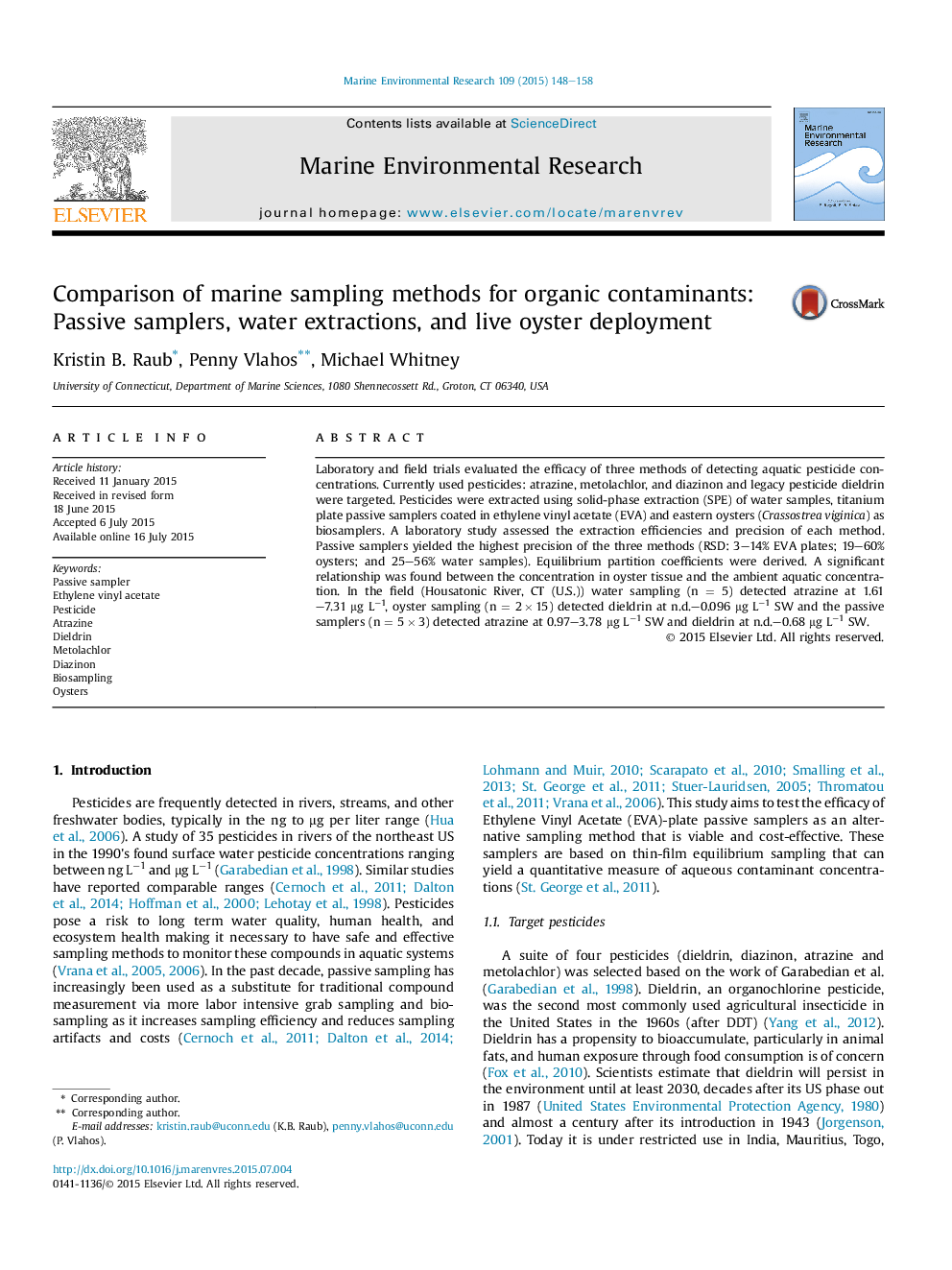| Article ID | Journal | Published Year | Pages | File Type |
|---|---|---|---|---|
| 6387741 | Marine Environmental Research | 2015 | 11 Pages |
â¢EVA plates had highest precision of the three methods in lab and field trials.â¢EVA plates had the highest extraction efficiency of the three methods.â¢Of the methods, EVA plates detect compounds with broadest range of properties.â¢EVA plate performance is an effective passive sampling method.â¢Predictive relationships for pesticide partitioning were developed.
Laboratory and field trials evaluated the efficacy of three methods of detecting aquatic pesticide concentrations. Currently used pesticides: atrazine, metolachlor, and diazinon and legacy pesticide dieldrin were targeted. Pesticides were extracted using solid-phase extraction (SPE) of water samples, titanium plate passive samplers coated in ethylene vinyl acetate (EVA) and eastern oysters (Crassostrea viginica) as biosamplers. A laboratory study assessed the extraction efficiencies and precision of each method. Passive samplers yielded the highest precision of the three methods (RSD: 3-14% EVA plates; 19-60% oysters; and 25-56% water samples). Equilibrium partition coefficients were derived. A significant relationship was found between the concentration in oyster tissue and the ambient aquatic concentration. In the field (Housatonic River, CT (U.S.)) water sampling (n = 5) detected atrazine at 1.61-7.31 μg Lâ1, oyster sampling (n = 2 Ã 15) detected dieldrin at n.d.-0.096 μg Lâ1 SW and the passive samplers (n = 5 Ã 3) detected atrazine at 0.97-3.78 μg Lâ1 SW and dieldrin at n.d.-0.68 μg Lâ1 SW.
